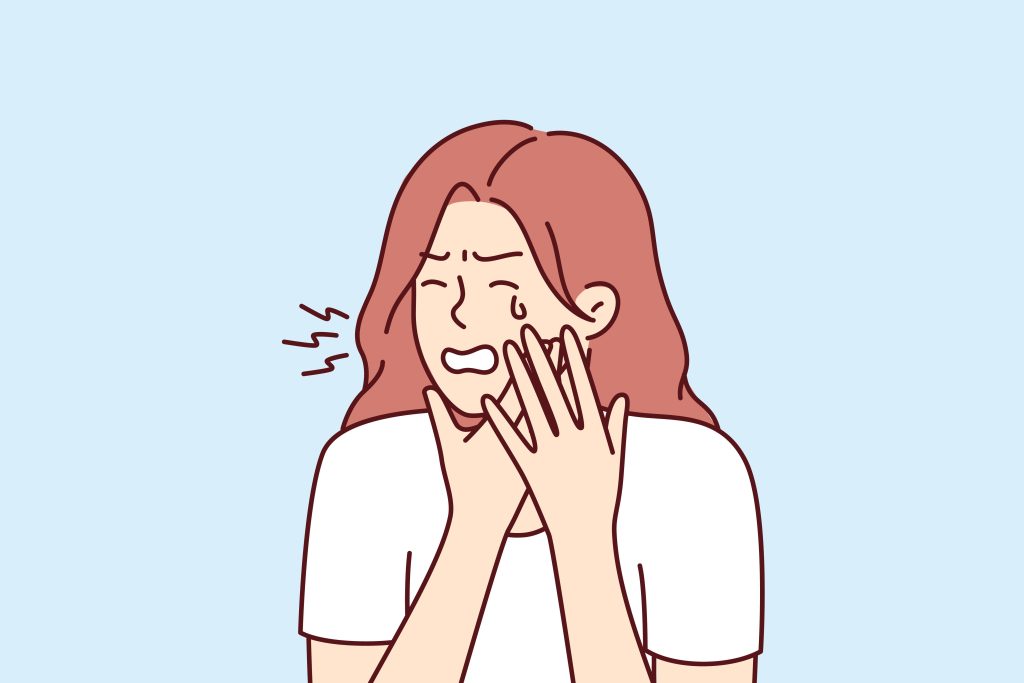Let’s Talk Temporomandibular Disorders


Temporomandibular disorders, commonly known as TMD, is a collective term referring to a group of conditions that affect the temporomandibular joint (TMJ) and the surrounding muscles. This complex joint is responsible for the movement of your jaw, allowing you to speak, eat, and perform various facial expressions. When something goes wrong with the TMJ, it can lead to a range of painful and debilitating symptoms. In this blog post, we will explore the causes, symptoms, diagnosis, and treatment options for temporomandibular disorders, as well as the role of physiotherapy in managing this condition.
Did you know, females are almost twice as likely to experience TMD to males?! TMD is more prevalent in women aged between 20-40 years and research suggests this is due to a hormonal link as there are oestrogen receptors in the TMJ.
Causes of Temporomandibular Disorders
TMD can have a variety of causes, and it is often the result of a combination of factors. Some common causes and contributing factors include:
- Macrotrauma: Injuries to the face or jaw can damage the TMJ or its surrounding structures. This may be related to a direct blow to the jaw or even long dental procedures.
- Microtrauma: Related to an increase in load or repetitive jaw movement may be a perpetuating or contributing factor to TMD symptoms. This may be associated with grinding or clenching of the teeth, or even chewing gum!
- Increased emotional stress: High stress levels can lead to clenching of the jaw muscles, exacerbating TMD symptoms.
- Arthritis: Inflammatory or systemic conditions like osteoarthritis, rheumatoid arthritis or SLE can affect the TMJ.
- Persistent pain: Centrally mediated pain can exacerbate symptoms experienced in the TMJ.
- Other dental conditions: Misalignment of the jaw or teeth can place undue stress on the TMJ and may require a trip to the dentist in conjunction with Physiotherapy treatment.
Symptoms of Temporomandibular Disorders
TMD can manifest with a wide range of symptoms, which can vary from person to person. However, criteria for diagnosis of TMD requires at least 2 of the following symptoms to be present:
- TMJ pain or discomfort: Persistent pain in the jaw, often felt in front of the ear at the TMJ.
- Pain in jaw muscles: Pain in the muscles that assist with chewing, which are felt along the cheeks above the jawline.
- Limited jaw movement and function: Difficulty or discomfort when opening or closing the mouth.
- Clicking or popping sounds: Audible sounds when moving the jaw, which may or may not be accompanied by pain.
Other symptoms associated with TMD may include:
- Headaches: Recurrent tension headaches often radiating from the temples along the jaw.
- Earaches: Pain or discomfort in the ears, which can be confused with ear infections.
- Neck and shoulder pain: Muscle tension in the neck and shoulders due to the compensatory mechanisms.
How can Physiotherapy help?
Physiotherapists work closely with patients to create individualized treatment plans. They assess the patient’s specific needs and progress, adjusting the treatment as necessary to achieve the best results. The treatment plan may involve the following:
- Jaw Exercises: A physiotherapist will design a tailored exercise program to address the specific needs of the patient. These exercises aim to improve jaw mobility, strengthen the muscles, and correct any muscle imbalances. Common exercises may include controlled mouth opening and closing, tongue exercises, and jaw stretches.
- Manual Therapy: Physiotherapists use hands-on techniques to manipulate and mobilize the jaw joint and surrounding structures. Manual therapy can help relieve muscle tension and improve joint alignment, reducing pain and discomfort.
- Myofascial Release: TMD often involves myofascial trigger points in the facial and neck muscles. Physiotherapists can perform myofascial release techniques to target and release these trigger points, reducing pain and restoring proper muscle function.
- Postural Education: Poor posture can contribute to TMD by placing extra strain on the neck and jaw muscles. Physiotherapists provide guidance on maintaining good posture and ergonomic adjustments to prevent exacerbating TMD symptoms.
- Biofeedback: Biofeedback techniques can help patients become more aware of their jaw clenching and muscle tension. By learning to recognize and control these habits, patients can better manage TMD symptoms.
- Stress Management: Stress is a common trigger for TMD. Physiotherapists can teach relaxation techniques and stress management strategies to help patients reduce emotional and physical tension, which can contribute to TMD symptoms.
- Referral: Depending on the cause of your TMD, your Physiotherapist may refer you to a GP, Specialist, Dentist or Psychologist to assist in the management of your condition.
What can I do at home?
There are plenty of things you can do to help yourself at home and we will give specific advice for what is best for you and your body. Some generalised things to start with:
- Avoid aggravating activities: This may mean avoiding chewing gum and eating steak, or trying to limit excessive talking where able.
- Postural awareness: Trying not to sit in sustained postures throughout the day.
- Stress management: Knowing your triggers and how to manage them.
- Hot and cold therapy: Using an ice pack or heat pack over the painful area can help to relieve pain – just see what works best for you.
Don’t suffer any longer with your jaw pain! Give us a call or book online now and come see the friendly and experienced team at Queensland Physiotherapy to get on top of your pain today.




